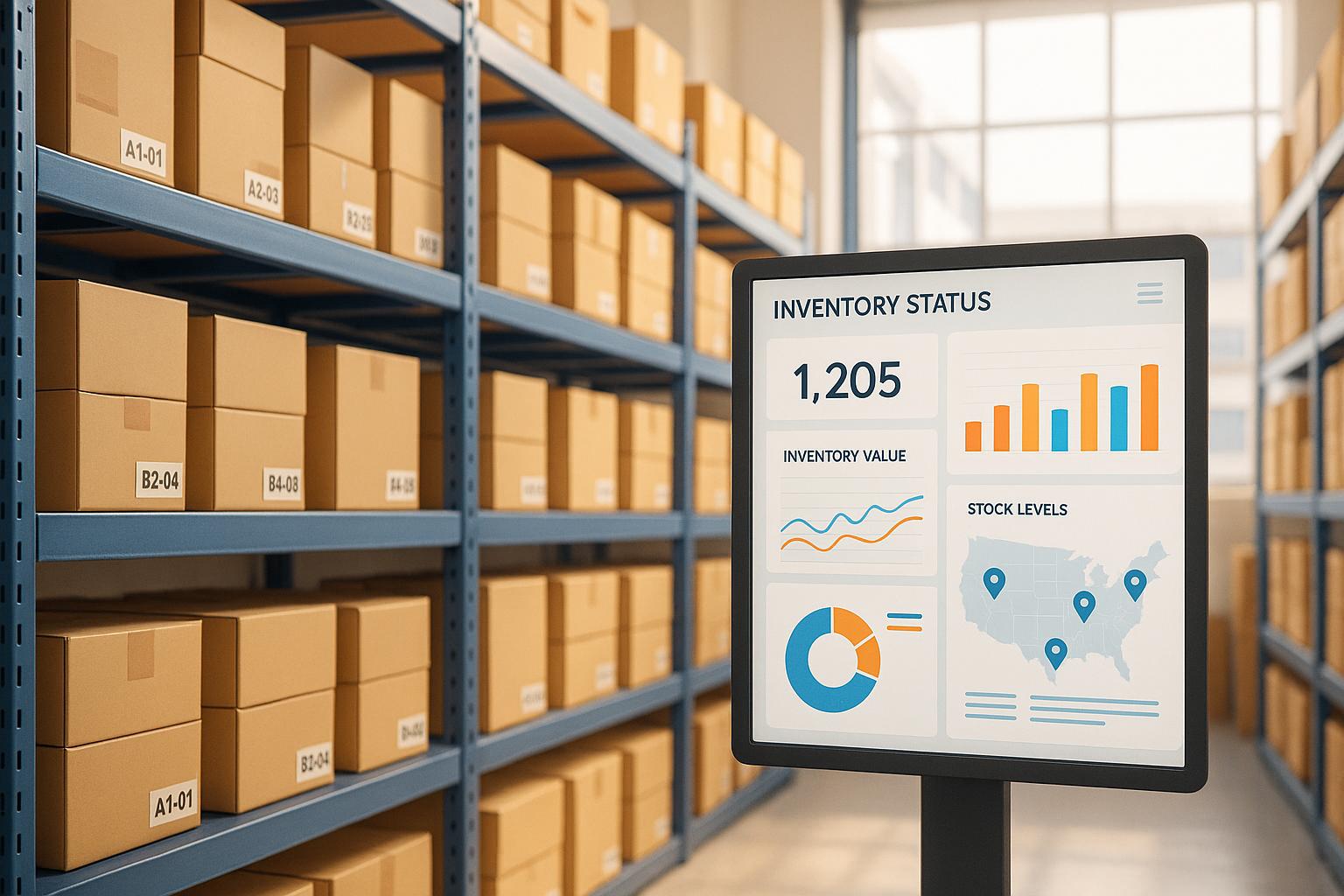AI transforms threat intelligence reporting by automating data analysis, improving accuracy, and speeding up response times. Here's how it works:
- Automated Data Collection: AI gathers data from network logs, alerts, social media, and dark web feeds.
- Real-Time Monitoring: Detects unusual behavior instantly, enabling quick threat responses.
- Insightful Analysis: Processes raw data into actionable insights, identifying patterns and summarizing threats.
- Threat Prediction: Uses historical data to anticipate future attacks, allowing proactive measures.
- Custom Reports: Offers tailored reports in various formats, frequencies, and focus areas, ensuring compliance with standards like GDPR or HIPAA.
Core AI Functions in Threat Reporting
Gathering Data
AI systems constantly keep an eye on network traffic, logs, alerts, and external sources. They also use natural language processing to pull information from incident reports, vulnerability databases, dark web feeds, social media, and industry updates.
Real-Time Threat Monitoring
After collecting data, AI systems move to live monitoring, which offers instant insights into unusual network behavior. These systems analyze traffic patterns and create baseline activity profiles. This helps quickly detect anything out of the ordinary that might signal a security issue. With 24/7 monitoring, organizations can act fast when new threats arise.
Analyzing Security Texts
Once monitoring is complete, AI processes the raw data into useful insights. It pulls out important details from security reports, organizes threats, connects related incidents, and creates clear summaries. This ability to handle both structured and unstructured data makes it easier to spot new security issues quickly.
Predicting Threats
Using past data, AI models can predict possible future attacks. This helps organizations prepare in advance, allocate resources wisely, and reduce the damage of any potential threats.
Advantages of AI Threat Reporting
Custom Report Options
AI-driven systems provide tailored reports that align with specific security requirements, helping organizations make informed decisions through personalized data.
Here’s how customization works:
| Report Aspect | Options Available |
|---|---|
| Format | Generate reports in formats like PDF, HTML, JSON, or XML. |
| Detail Level | Choose between concise executive summaries or detailed, in-depth analyses. |
| Frequency | Set intervals such as real-time, hourly, daily, or weekly updates. |
| Focus Areas | Target specific areas like network security, application security, or endpoints. |
| Compliance | Ensure outputs align with standards like HIPAA, GDPR, SOC 2, or PCI DSS. |
This adaptability ensures that reports stay useful and aligned with changing security needs.
Processing Threat Reports at Scale Using AI and ML ...
sbb-itb-bec6a7e
Adding AI to Security Workflows
Integrating AI-powered threat reporting tools into your security setup can help improve threat detection accuracy and speed. Here's how to get started.
Initial Tool Setup
Begin by mapping and configuring your security data sources to create a solid foundation:
| Setup Phase | Actions | Outcome |
|---|---|---|
| Data Source Mapping | Identify log files, security events, and network traffic | Inventory of security data points |
| Access Configuration | Set up API keys and authentication tokens | Secure and controlled data flow |
| Data Format Standards | Define standardized input formats | Streamlined and consistent processing |
| Initial Testing | Test with sample data | Confirmed functionality |
Once your data sources are properly set up, connect these tools to your core security systems for seamless integration.
Security System Integration
To integrate AI tools with your existing security infrastructure, follow these steps:
- SIEM Integration: Establish API connections with your Security Information and Event Management (SIEM) system for real-time processing and automated alerts.
- EDR Synchronization: Link AI tools with Endpoint Detection and Response (EDR) systems for better endpoint monitoring.
- Alert System Configuration: Set up unified workflows that combine AI insights with your established security protocols.
These connections ensure your systems work together efficiently, allowing for more comprehensive threat management.
Finding Tools on AI for Businesses

AI for Businesses offers a curated directory to simplify the search for AI-based threat reporting tools:
| Feature | Benefit |
|---|---|
| Tool Categories | Easy navigation of security-specific AI solutions |
| Detailed Reviews | Informed decision-making based on real-world use |
| Integration Guides | Step-by-step setup instructions |
| Support Resources | Access to expert assistance |
When choosing tools, focus on the following:
- API Documentation: Check for clear integration instructions.
- Compliance Certifications: Ensure adherence to security standards.
- Scalability Options: Verify the tool can grow with your needs.
- Support Services: Look for reliable technical support.
Using AI Tools Effectively
To get the most out of AI in threat reporting, focus on keeping systems updated, maintaining data quality, and combining AI capabilities with human expertise. Here's how to approach each area effectively.
Keeping AI Systems Current
Regular updates are critical for ensuring AI systems perform well in detecting threats. Key components to prioritize include:
| Component | Action | Why It Matters |
|---|---|---|
| Threat Databases | Update frequently | Adds the latest threat signatures |
| ML Models | Refine periodically | Boosts pattern recognition accuracy |
| System Rules | Review regularly | Ensures alignment with policies |
| Performance Metrics | Monitor consistently | Improves overall system efficiency |
Staying on top of these updates helps your AI tools remain relevant and effective.
Data Quality Management
Accurate threat reporting relies on clean, reliable data. Implement these data management practices to ensure quality:
| Data Quality Factor | Best Practice | Why It’s Important |
|---|---|---|
| Data Validation | Use automated checks | Reduces false positives |
| Deduplication | Filter in real-time | Prevents redundant processing |
| Standardization | Enforce consistency | Simplifies data analysis workflows |
| Source Verification | Verify thoroughly | Maintains data trustworthiness |
Good data management, paired with human oversight, strengthens the reliability of threat intelligence.
AI and Human Teamwork
Combining AI's efficiency with human judgment creates a strong security workflow. Here’s how the roles complement each other:
| AI Role | Human Role | Result |
|---|---|---|
| Automated Detection | Contextual Analysis | Broader, more accurate threat insights |
| Alert Generation | Alert Confirmation | Triggers precise, timely responses |
| Data Correlation | Strategic Decision-Making | Improves overall security strategies |
| Report Automation | Detailed Review | Delivers complete, reliable reports |
This collaboration ensures that routine tasks are handled efficiently by AI, while humans focus on nuanced decision-making, enhancing the overall security process.
Conclusion
Key Takeaways
AI is reshaping how organizations handle threats by speeding up detection and improving response times. For instance, in March 2024, a Darktrace client, NHS, managed to cut its threat identification and response time by 65% within 90 days. This effort saved the organization approximately $500,000 in potential losses.
This example highlights how integrating AI into security processes can deliver measurable benefits.
Next Steps
To build on these advancements, organizations should take a structured approach. Start by identifying vulnerabilities in your security setup. Then, choose AI tools that align with your current infrastructure. Ensure smooth integration with existing protocols and invest in training your team to maximize the tools' effectiveness.
For those looking to strengthen their threat management systems, AI for Businesses offers a curated selection of tools tailored for security operations.
FAQs
How does AI enhance the speed and accuracy of threat intelligence reporting?
AI significantly improves threat intelligence reporting by automating data collection and analysis, which reduces manual effort and minimizes human error. By leveraging machine learning algorithms, AI tools can quickly process vast amounts of data, identify patterns, and detect potential threats in real time.
Additionally, AI-powered systems provide more accurate insights by cross-referencing multiple data sources and continuously learning from new information. This not only speeds up the reporting process but also ensures that organizations receive timely, actionable intelligence to better protect their systems and data.
What should businesses consider when integrating AI-powered tools into their threat intelligence systems?
When integrating AI-powered tools into your threat intelligence systems, it's important to consider a few key factors to ensure seamless implementation and optimal results. Compatibility with your existing security infrastructure is crucial - verify that the AI tools can integrate with your current systems without extensive modifications. Data accuracy is another critical aspect; ensure the AI solution can analyze and process large datasets while minimizing false positives or negatives.
Additionally, review the scalability of the tool to confirm it can grow alongside your business needs. It's also essential to provide training for your team so they can effectively utilize the AI-driven insights. Finally, evaluate the vendor's support and updates to ensure ongoing reliability and access to the latest advancements in threat detection technologies.
How can businesses ensure AI-generated threat intelligence reports comply with regulations like GDPR and HIPAA?
To ensure AI-generated threat intelligence reports comply with regulations such as GDPR and HIPAA, businesses should focus on implementing robust data governance practices. This includes ensuring that the AI tools they use are designed to handle sensitive data securely and meet specific compliance requirements.
Organizations should also conduct regular audits, monitor data processing activities, and maintain clear documentation to demonstrate compliance. Additionally, consulting with legal and cybersecurity experts can help address any regulatory gaps and ensure adherence to industry standards.


